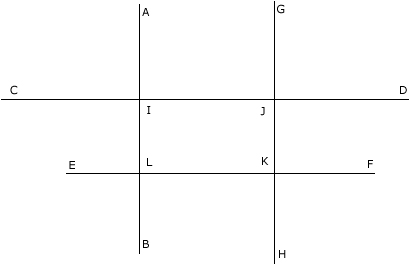What you see in the second image is a projection of the first, after a rotation. So treat it exactly like that. Meaning, you have 4 lines in $\mathbb{R}^3$. You know their equations. Furthermore, you have another 4 lines in $\mathbb{R}^2$ corresponding to the second image.
To solve, parameterize the family of possible 4 lines in $\mathbb{R}^3$ that project onto the 4 lines in $\mathbb{R}^2$. Find the matrix that takes the original 4 lines to generic quadruple in the mentioned family. Now write equations to ensure that matrix is actually a rotation. You should have enough information for there to be at most one quadruple that can actually be gotten from the original lines. If not, then your question has multiple answers.




